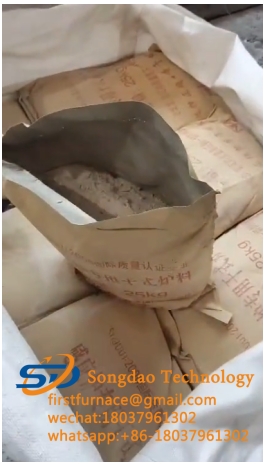- 19
- Jan
Preparation process of refractory castable
Preparation process of refractory castable
The preparation process of refractory castables, the addition of steel fiber to the cement-bonded castable can improve some properties of the castable: it can improve the relative toughness of the castable, mechanical shock resistance, thermal shock resistance, cracking resistance, and spalling resistance. It can also inhibit the shrinkage after curing, drying and heat treatment, thereby prolonging the service life of the castable.
The steel fiber used to reinforce the refractory castable has a diameter of 0.4-0.5mm and a length of 25mm. The amount of steel fiber added to the castable is 1-4% (weight). If the steel fiber is too long or the addition amount is too much, the steel fiber will not be easily dispersed during casting, and the best reinforcement effect will not be achieved; if the steel fiber is too short or the addition amount is too small, the reinforcement effect will not be achieved. Therefore, the length and addition of steel fiber should be appropriate.
The steel fiber can be mixed in the dry mixture, and then add water and stir evenly. However, in general, the mixture is mixed with water first, and then steel fibers are evenly sprinkled into the castable, and then stirred. This not only enables the mixture to be stirred uniformly, but also saves 1/3 of the mixing time compared with the mixing of steel fibers in the dry material.
To make the steel fibers uniformly dispersed in the castable, the steel fibers must be uniformly dispersed through vibration or sieving before being added to the castable. After pouring and adding steel fiber, the workability will be reduced, but no additional water can be added for supplementation, otherwise the final strength of the castable will be unfavorable. During molding, a vibrator can be used to vibrate outside, or a vibrating rod can be used to vibrate inside the product, and dense products can also be obtained. Wood tools cannot be used to finish the surface after molding, because steel fibers will penetrate the tool and damage the surface of the product. The curing and drying of steel fiber reinforced castables are the same as ordinary castables.

